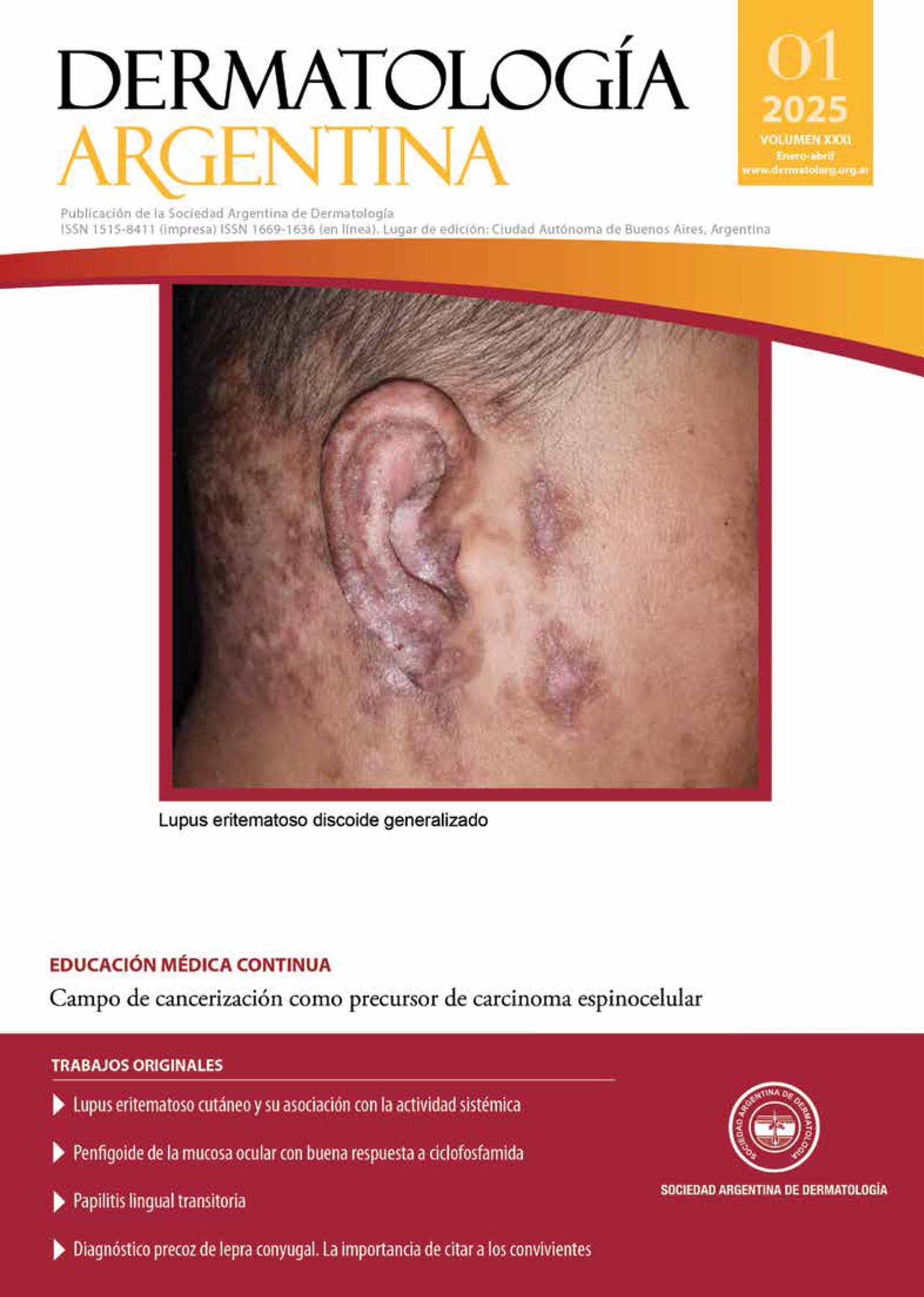Mejoría de la enfermedad de fox-fordyce con toxina botulínica tipo A
DOI:
https://doi.org/10.47196/da.v31i1.2782Palabras clave:
enfermedad de fox-fordyce, toxina botulínica tipo AResumen
Paciente de 36 años con enfermedad de Fox-Fordyce (EFF) de 4 años de evolución axilar bilateral, con prurito. Se le indicaron tratamientos tópicos con aceponato de metilprednisolona al 1%, tretinoína al0,5%, clindamicina al 1%, todos sin respuesta a los 3 meses. Además, presentaba hiperhidrosis por loque se indicó tratamiento con toxina botulínica tipo A, 75 unidades por lado. Durante el seguimiento la paciente mostró reducción significativa tanto de la sudoración como del número de las pápulas de la EFFLa EFF es un trastorno crónico poco frecuente que afecta áreas ricas en glándulas apocrinas principalmente en axilas, región anogenital y periareolar. Se observa en pacientes jóvenes de sexo femenino. Se presenta como pápulas color piel, usualmente pruriginosas. Es causada por el taponamiento folicular del infundíbulo piloso en la porción distal del conducto apocrino y porciones secretoras de las glándulas apocrinas. Secundariamente se produce una respuesta inflamatoria local linfohistiocitaria. Su causa se desconoce, pero existe una clara influencia hormonal. Además, hay casos descriptos posdepilación laser.
Se postulan muchos tratamientos a partir de casos aislados, pero ninguno demostró ser particularmente efectivo. Entre ellos los tópicos: corticoides, inhibidores de calcineurina, tretinoína, clindamicina; los sistémicos: isotretinoína y anticonceptivos orales; y otros como el láser, la escisión quirúrgica y la fototerapia.
Con respecto a la toxina botulínica, la disminución del sudor puede aliviar el prurito. Además, hay evidencia clínica de su efecto antipruriginoso en otras patologías como el liquen simple crónico, la notalgia parestética y el prurito braquiradial. El mecanismo se relaciona con la disminución de la liberación de acetilcolina, sustancia P y glutamato, relacionados con el prurito. Por el contrario, el proceso por el cual la toxina botulínica produce mejoría en la EFF se desconoce. Sin embargo, los autores la sugieren como una alternativa terapéutica válida para casos recalcitrantes de EFF.
Citas
I. Sun L, Brazao C, Sousa DD, Patrocinio J, et ál. Improvement of Fox-Fordyce disease with botulinum toxin type A. Dermatology Online Journal. 2025. 31(1). http://dx.doi.org/10.5070/D331164982. Consultado marzo de 2025.
Descargas
Publicado
Número
Sección
Licencia
Derechos de autor 2025 a nombre de los autores. Derechos de reproducción: Sociedad Argentina de Dermatología

Esta obra está bajo una licencia internacional Creative Commons Atribución-NoComercial-SinDerivadas 4.0.
El/los autor/es tranfieren todos los derechos de autor del manuscrito arriba mencionado a Dermatología Argentina en el caso de que el trabajo sea publicado. El/los autor/es declaran que el artículo es original, que no infringe ningún derecho de propiedad intelectual u otros derechos de terceros, que no se encuentra bajo consideración de otra revista y que no ha sido previamente publicado.
Le solicitamos haga click aquí para imprimir, firmar y enviar por correo postal la transferencia de los derechos de autor













